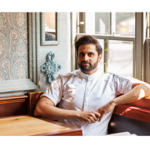In 1999, a young British lawyer, Sally Clark, was found guilty of murdering two newborn babies over a two-year period and sentenced to life in prison. A paediatrician testified for the prosecution that the chances of the two boys dying from Sudden Infant Death Syndrome (SIDS), or “Sudden Baby Death,” were roughly 1 in 73 million. This was the only real evidence of the crime.
However, the probability estimate that convinced the jury was flawed. It assumed that the two deaths were statistically independent events, justifying the multiplication of the respective probabilities of both events occurring. 1/8543 x 1/8543 is roughly equal to 1/73,000,000. But in reality, two SIDS deaths in the same family are not independent events. The death of one increases the medical probability of a second by a factor of ten. Furthermore, Ray Hill, a mathematics professor at the University of Salford, later calculated that the chances of two SIDS cases in the same family were between 4.5 and 9 times higher than the chances of two infant siblings being murdered. (See Ray Hill’s “Multiple Occurrences of Sudden Infant Deaths – Coincidence or More Than Chance?”)Pediatric and perinatal epidemiology (2004, 18, 320-326).
Clarke’s conviction was overturned on appeal after she served three years in prison. Statistician David Hand noted that “she never recovered from her ordeal” and was found dead in 2007 from “acute alcohol poisoning”. Tim Harford Financial Times“Undercover Economist” said:“She died from drinking at age 42.” A very tragic and sad story.
There are other recorded cases in which murder convictions have been brought about through similar ignorance of the probabilities.
On probability and chance I recommend Professor Hand’s book. The Impossibility Principle: Why Coincidences, Miracles, and Rare Events Happen Every Day (Scientific American and Farrar, Straus and Giroux, 2014). The book is accessible to a knowledgeable general reader with no prior knowledge of probability theory, which is the foundation of statistical analysis.
Discovering the laws of chance, law of chance—Probability theory is one of the great achievements of mankind. As a testament to the greatness of probability theory, Mike Lynch’s name for his superyacht The “Bayesian” sank off the coast of Italy last week, taking his own life and that of many of his passengers. Thomas Bayes 18th century statistician who developed important theorems in probability theory.
Tim Harford points out that “in 2010 the UK Court of Appeal ruled that Bayes’ Theorem could not be used as a tool to assess how a collage of evidence should be put together,” adding that “a little statistical education in the legal profession would go a long way.”
If you are charged with a crime, your freedom may depend on your lawyers’ and judges’ understanding of probability theory. A necessary condition is that it is well known to an educated public that comes from the legal profession. But this is not generally the case. If it were, conspiracy theories would have another hurdle to overcome, in addition to the immediate obstacle of rational choice: politicians don’t know any better.
There is an ongoing debate in the UK about the poor knowledge of science, mathematics and statistics among its citizens. The recent trial of British nurse Lucy Letby, who was given a life sentence for murdering a number of patients on weak factual evidence and equally misleading statistical estimates, has been strongly criticised by many statisticians. economist Writing about former Prime Minister Boris Johnson (“Lucy Letby’s trial shocks British statisticians(August 22, 2024):
Johnson is the epitome of what went wrong. Despite what his behavior often suggests, he is not a stupid man, or, after Eton and Oxford, a poorly educated man. His education was yellowish but not futile. He could read Archimedes in the original but could not understand Archimedes’ mathematics. He is the product of what (the late physicist and novelist C.P.) Snow called Britain’s “fanatical belief in the professionalization of education.” And former universities minister David Willett has said that belief is “stronger than ever.”
I would argue that the problem is just as acute when it comes to people who only know the sciences and not the humanities or economics. This is especially and emphatically true for those who seek to forcibly intervene in the lives of others, whether in public office or in voting.
I don’t think courts should convict people solely or even primarily on the basis of probability. There needs to be evidence of significant facts and testimonies. But the lesson learned from Sally Clark and other cases is that when probabilities are cited, they should be calculated properly. The cure for “bad statistics,” Harford argues, is not “no statistics” but “the proper use of statistical tools.”
The issue has to do with the presumption of innocence and the requirement that prosecutors must prove guilt “beyond a reasonable doubt.” Our freedom owes much to these legal principles in the Western tradition, however imperfect. But whatever the level of reasonable doubt that is tolerated, which in a free society must correspond to a negligible probability of error, lawyers and judges need to understand statistical theory well enough to understand the probabilities involved.
*******************************************

Goddess of Chance and Death, by DALL-E, Inspired by your humble blogger








